b站小土堆pytorch教程学习笔记
1.神经网络骨架搭建:Containers
官方文档代码:
import torch.nn as nn
import torch.nn.functional as Fclass Model(nn.Module):def __init__(self):super().__init__()self.conv1 = nn.Conv2d(1, 20, 5)self.conv2 = nn.Conv2d(20, 20, 5)def forward(self, x):x = F.relu(self.conv1(x))return F.relu(self.conv2(x))
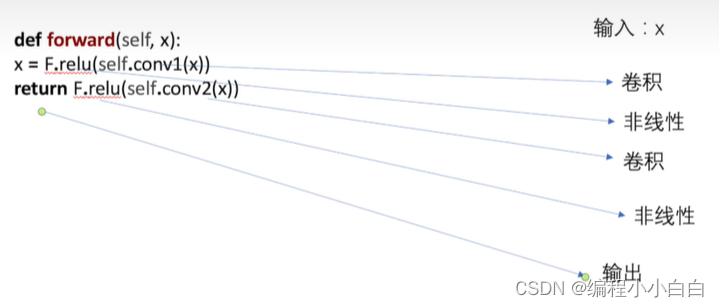
import torch
from torch import nnclass A(nn.Module):def __init__(self):super().__init__()def forward(self,input):output=input+1return outputa=A()
x=torch.tensor(1.0)
output=a(x)
print(output)
tensor(2.)
2.向骨架中填充内容:
convolution layers
pooling layers
padding layers
Non-linear Activations (weighted sum, nonlinearity)
Normalization Layers
2.1卷积层
CLASS torch.nn.Conv2d(in_channels, out_channels, kernel_size, stride=1, padding=0, dilation=1, groups=1, bias=True, padding_mode=‘zeros’, device=None, dtype=None)
Parameters
in_channels (int) – Number of channels in the input image
out_channels (int) – Number of channels produced by the convolution
kernel_size (int or tuple) – Size of the convolving kernel
stride (int or tuple, optional) – Stride of the convolution. Default: 1
padding (int, tuple or str, optional) – Padding added to all four sides of the input. Default: 0
padding_mode (str, optional) – ‘zeros’, ‘reflect’, ‘replicate’ or ‘circular’. Default: ‘zeros’
dilation (int or tuple, optional) – Spacing between kernel elements. Default: 1
groups (int, optional) – Number of blocked connections from input channels to output channels. Default: 1
bias (bool, optional) – If True, adds a learnable bias to the output. Default: True
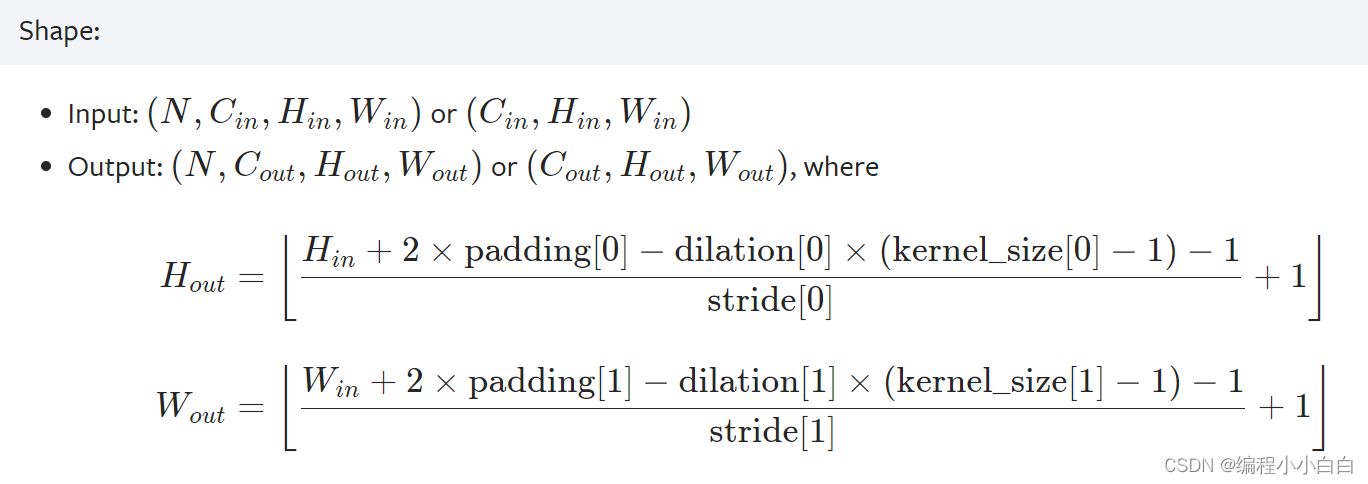
import torch
import torchvision
from torch import nn
from torch.nn import Conv2d
from torch.utils.data import DataLoaderdataset=torchvision.datasets.CIFAR10('./dataset',train=False,transform=torchvision.transforms.ToTensor(),download=True)
dataloader=DataLoader(dataset,batch_size=64)class Han(nn.Module):def __init__(self):super(Han, self).__init__()##首先完成父类的初始化self.conv1=Conv2d(in_channels=3,##定义卷积层,可在其他函数中调用out_channels=6,kernel_size=3,stride=1,padding=0)def forward(self,x):##定义一个forward函数x=self.conv1(x)return xhan=Han()
print(han)
Files already downloaded and verified
Han(
(conv1): Conv2d(3, 6, kernel_size=(3, 3), stride=(1, 1))
)
初始化的神经网络名字为Han,一个卷积层。
接下来对每张图像进行处理:
han=Han()
# print(han)
for data in dataloader:imgs,targets=dataprint(imgs.shape)#原图像的shapeoutput=han(imgs)#经过卷积print(output.shape)#后的图像shape
torch.Size([64, 3, 32, 32])
torch.Size([64, 6, 30, 30])
…
接下来使用tensorboard展示:
han=Han()
# print(han)
writer=SummaryWriter('logs')step=0
for data in dataloader:imgs,targets=dataprint(imgs.shape)#原图像的shape,torch.Size([64, 3, 32, 32])writer.add_images('input',imgs,step)output=han(imgs)#经过卷积print(output.shape)#后的图像shape.torch.Size([64, 6, 30, 30])#由于6通道无法显示,尝试reshape 6->3output=torch.reshape(output,(-1,3,30,30))writer.add_images('output',output,step)step=step+1
> tensorboard --logdir=logs
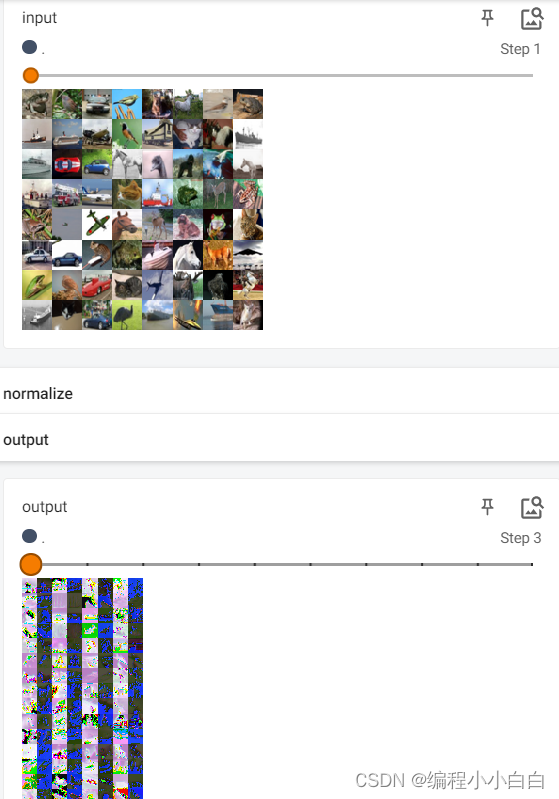
2.2 最大池化
CLASStorch.nn.MaxPool2d(kernel_size, stride=None, padding=0, dilation=1, return_indices=False, ceil_mode=False)
Parameters
kernel_size (Union[int, Tuple[int, int]]) – the size of the window to take a max over
stride (Union[int, Tuple[int, int]]) – the stride of the window. Default value is kernel_size
padding (Union[int, Tuple[int, int]]) – Implicit negative infinity padding to be added on both sides
dilation (Union[int, Tuple[int, int]]) – a parameter that controls the stride of elements in the window
return_indices (bool) – if True, will return the max indices along with the outputs. Useful for torch.nn.MaxUnpool2d later
ceil_mode (bool) – when True, will use ceil instead of floor to compute the output shape
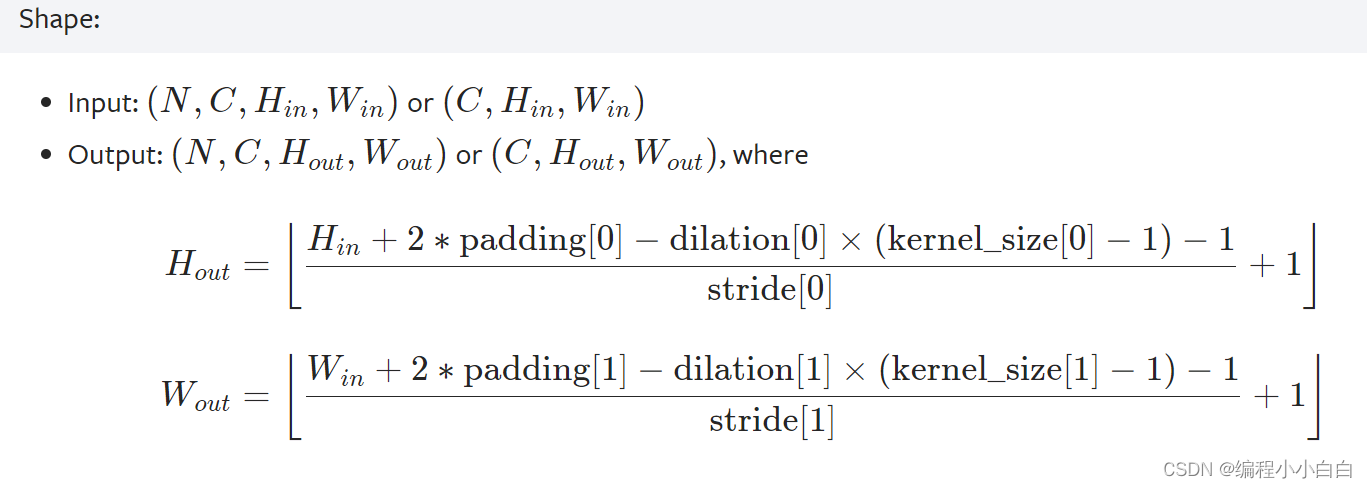
相关代码同卷积层:
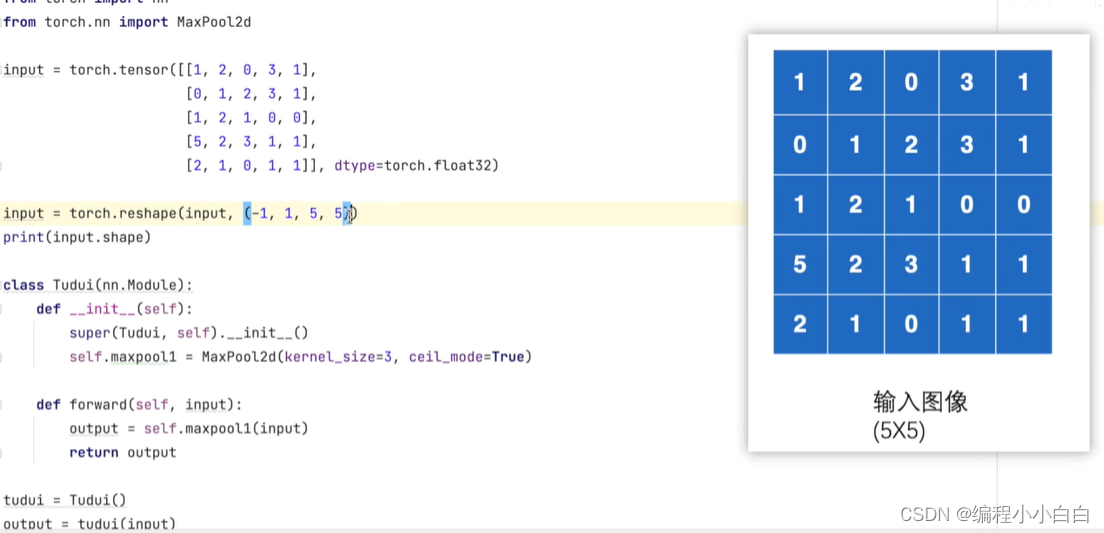
最大池化一般只需要设置kernel_size,移动步长默认为kernel_size
ceil_mode为True时,表示边缘部分最大池化结果是否舍去
最大池化希望保留输入特征,但减少计算量
2.3非线性激活
CLASS torch.nn.ReLU(inplace=False)
import torch
from torch import nn
from torch.nn import ReLUinput=torch.tensor([[1,-0.5],[-1,3]])
output=torch.reshape(input,(-1,1,2,2))
# print(output.shape)class Han(nn.Module):def __init__(self):super(Han, self).__init__()self.relu1=ReLU(inplace=False)def forward(self, input):output=self.relu1(input)return outputhan=Han()
output=han(input)
print(output)
tensor([[1., 0.],
[0., 3.]])
查看sigmoid对图片影响:
han=Han()
# output=han(input)
# print(output)
writer=SummaryWriter('logs')
step=0
for data in dataloader:imgs,targets=datawriter.add_images('input_sigmoid',imgs,step)output=han(imgs)writer.add_images('output_sigmoid',output,step)step+=1writer.close()

非线性层向网络引入非线性特征,非线性越多才能训练出符合各种特征的模型。
2.4线性层及其他层

线性层:
import torch
import torchvision.datasets
from torch import nn
from torch.nn import Linear
from torch.utils.data import DataLoaderdataset=torchvision.datasets.CIFAR10('dataset',train=False,transform=torchvision.transforms.ToTensor())
dataloader=DataLoader(dataset,batch_size=64)class Han(nn.Module):def __init__(self):super(Han, self).__init__()self.linear1=Linear(196608,10)def forward(self,input):output=self.linear1(input)return outputhan=Han()for data in dataloader:imgs,targets=dataprint(imgs.shape)#原始图片torch.Size([64, 3, 32, 32])# output=torch.reshape(imgs,(1,1,1,-1))output=torch.flatten(imgs)#torch.Size([196608])print(output.shape)#展平后torch.Size([1, 1, 1, 196608])->torch.Size([10])output=han(output)print(output.shape)#经过线性层后torch.Size([1, 1, 1, 10])
2.5 已有网络模型
图像方面:
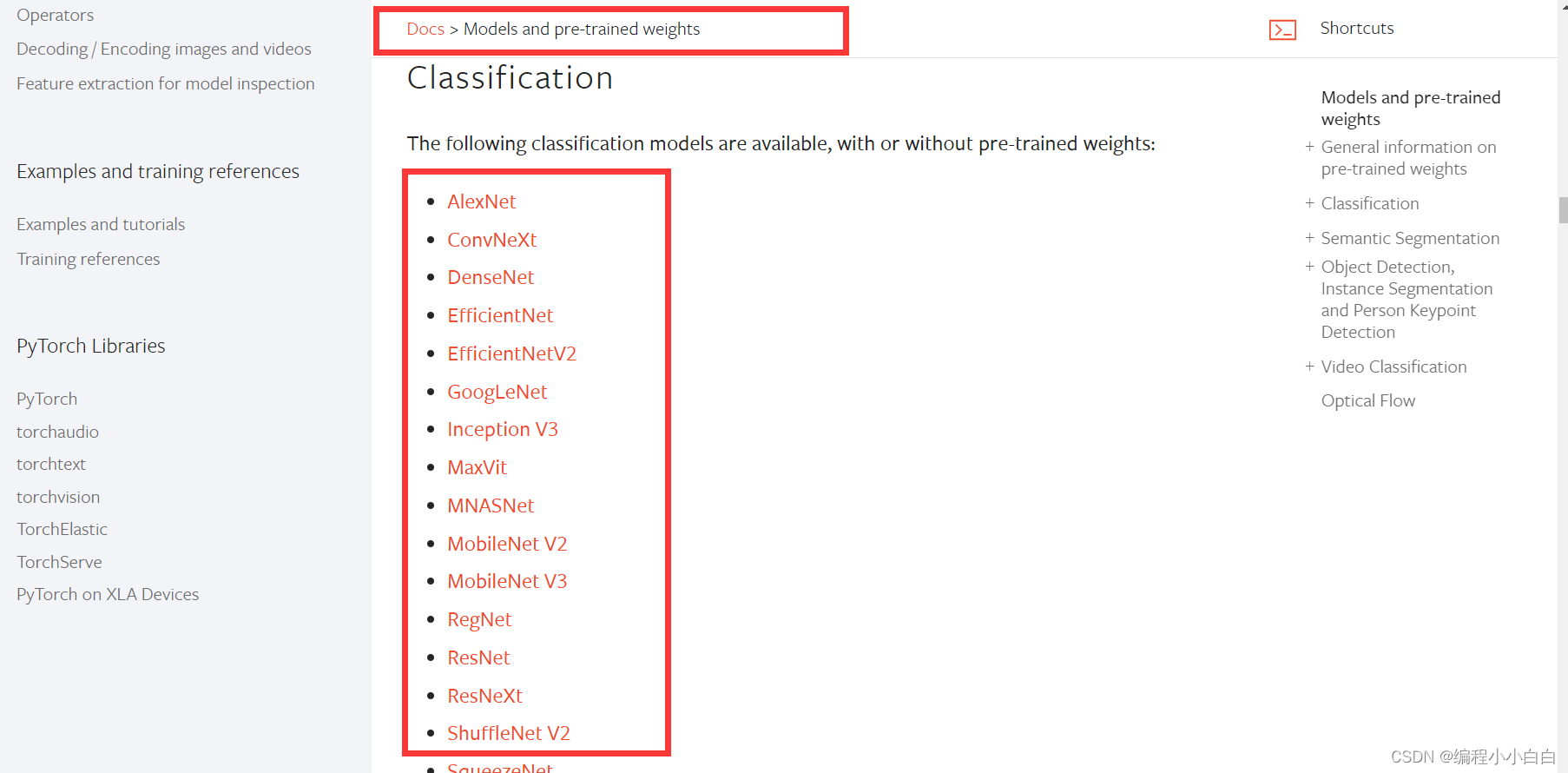






经验篇)





)


---(图文并茂详细讲解))



